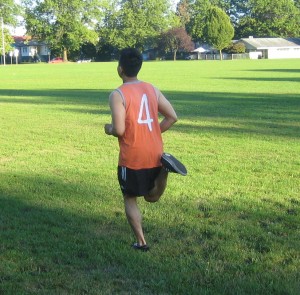Knee pain is a common complaint that affects people of all ages. It can be a result of an injury, like a ligament that is torn and a ruptured ligament. Some medical conditions like arthritis, gout and some infections can also cause knee pain. Knee problems and some injuries occur during sports or recreational activities, home tasks as well as activities that are work related.
The knees are the largest joints of the body and there are two discs also known as menisci that separate the upper and the lower bones of the knee. The ligaments, tendons and the muscles function in connecting the femur which is the upper bone leg while tibia and fibula are the lower leg bones. The articular cartilage covers the bone surface present inside the knee joint which helps absorb shock and provide a smooth, gliding surface for the movement of the joints. It is best that you are prepared to manage this condition by enrolling in a first aid course today.
Symptoms of knee pain
- There is instability and weakness
- Swelling and stiffness
- There is redness and warmth sensation when touched
- A popping sound and crunching noise
- Difficulty in straightening the knees
Causes of knee pain

- Tendons or fluid-filled sacs called bursa, ligaments that cover the knee joint can be affected by a knee injury and also the cartilage, ligaments and bones that form the joints can also be affected by injuries.
- An injury of the anterior cruciate ligament which is the tearing of one of the four ligaments that function in connecting the shinbone to the thighbone. This injury is common in people who play soccer, basketball and other sports that require sudden change in directions.
- A torn meniscus which is a tough and rubbery cartilage that function in absorbing shock between the shinbone and the thighbone. It will tear due to sudden twisting of the knee while bearing weight on it.
- Some knee injuries can cause inflammation in the bursa which is the small sacs of fluid that function in cushioning the outside part of the knee joint so that the tendons and ligaments can glide smoothly over the joint.
- Knee pain can also cause tendinitis which is the irritation and inflammation of one of the tendons which is a thick and fibrous tissue that is responsible in attaching muscles to the bones. People who are susceptible to these injuries are skiers, cyclist and people who play sports that require jumping.
Treatment and home remedies
- Take a rest for a day or two from normal activities in order to reduce repetitive strain on the knee.
- Apply some ice packs to minimize the pain and inflammation like a bag of frozen peas is best because it covers the whole knee for about 20 minutes.
- Applying compression to help prevent the build-up of fluids to the damaged tissues and maintain knee alignment and stability.
- For the swelling, elevate the injured leg on a pillow or sit in a reclining chair.
